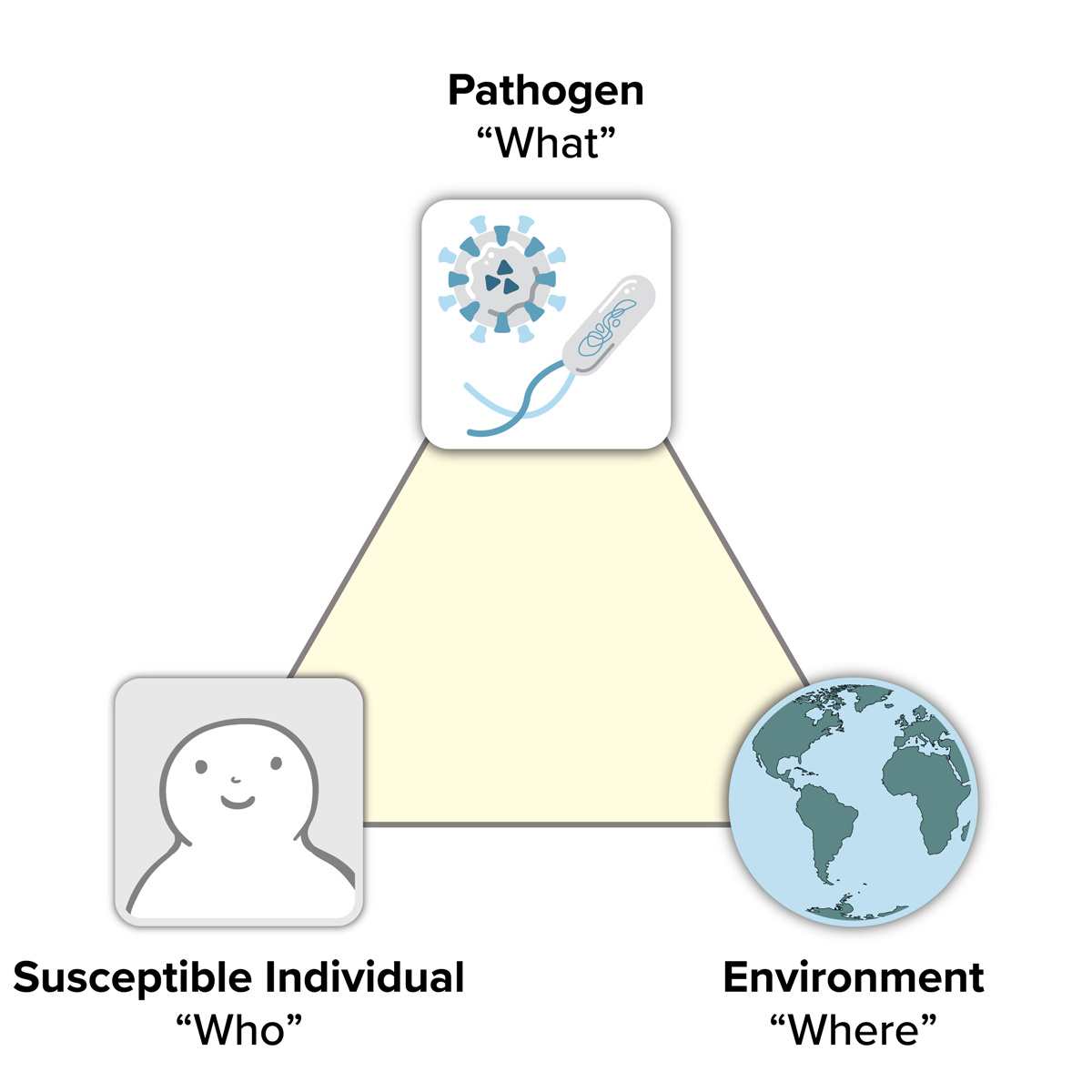Introduction
Factors Influencing Infectious Disease
You or someone you know has likely experienced an infectious disease, such as influenza (flu) or a common cold.
Three major factors determine how infectious diseases occur:
- A pathogen
A microbe that can cause disease under certain conditions. Pathogens include certain types of viruses, bacteria, fungi, and parasites.
- A susceptible individual
An individual who can become infected with a particular pathogen. This means that the pathogen can enter their body, multiply, and potentially cause an infection. An individual may be susceptible if they are currently uninfected and unvaccinated.
- The environment
The surroundings and conditions for a pathogen (e.g., water, blood, air, and temperature). Certain environments can allow the pathogen to spread between individuals.
For a pathogen to spread and cause disease, it must be in a population of susceptible individuals. It must also be in an environment that supports the pathogen’s spread from one individual to another.

How Infectious Diseases Spread
Once a pathogen infects a susceptible individual, that individual may become infectious, meaning they can spread the pathogen to other susceptible individuals in the population. The movement of a pathogen from one individual to another is called transmission. Depending on the pathogen, transmission can occur through air, bodily fluids, insects, contaminated food or water, or other methods.
Many pathogens are present in populations at mostly constant, often manageable levels. Each pathogen’s baseline level is the expected number of disease cases it causes, in a particular population, within a specific period of time.
Occasionally, the number of disease cases rises above the baseline level, which may cause an outbreak or epidemic. An outbreak is an unexpected increase in the number of disease cases in a limited geographic area. An epidemic is similar but occurs over a large geographic area.

Modeling the Spread of Infectious Diseases
Watch an interview with physician Nahid Bhadelia and scientist Jamie Caldwell to learn how epidemiologists study disease spread using epidemiological models.
Epidemiological models are often built using mathematical modeling: a process that uses mathematical equations to represent a real-world system or scenario. Mathematical models can be used to make predictions, analyze results, and provide insights about real-world problems.
In this Click & Learn, you will explore how one epidemiological model, the SIR model, is used to simulate the spread of a pathogen in a population.
In the “SIR Model Basics” tab, you will learn about the basic components of the SIR model, then build and interpret a graph of outbreak data.
In the “SIR Model Advanced” tab, you will use the SIR model to explore epidemic dynamics and learn about additional factors that affect the spread of an infectious disease.